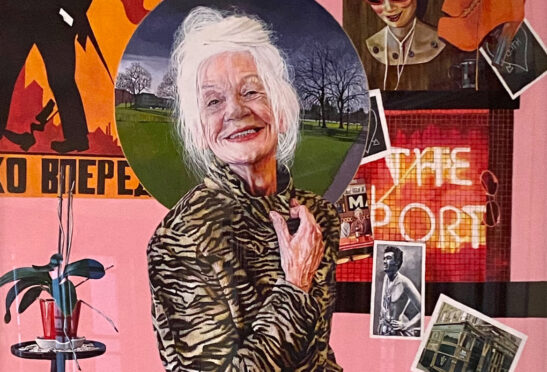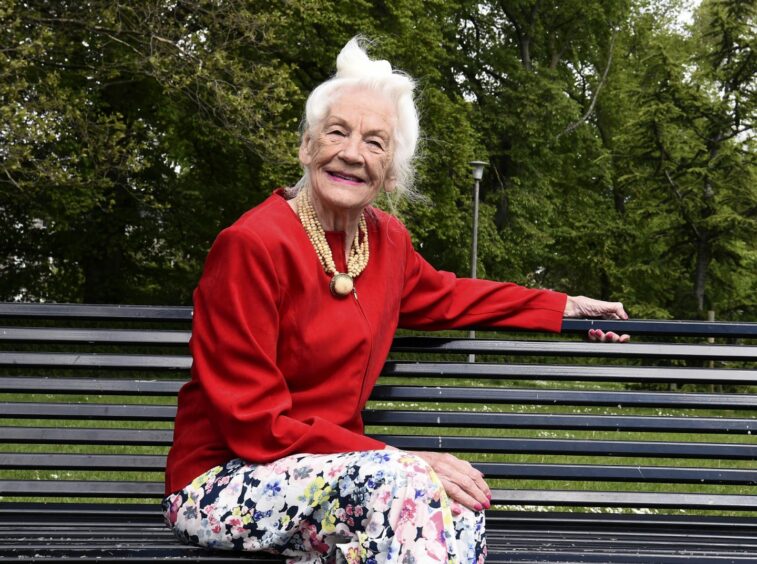
Her loss may not have generated headlines around the world but Scotland lost another monarch last week; Mary Moriarty, the queen of Leith.
Many, many people will have known Mary, who died at 83, longer and better than I did but for the last decade of her life we were neighbours, sharing the common ground of a busy street and looking out for one another. Perhaps, in today’s times of division and intolerance, inter-generational friendships spanning different walks of life matter now more than ever.
It was common to bump into Mary on walkabout in Leith; walking her dog, Brodie, on the Links; ceilidh dancing at the Dockers Club Burns Supper; with a megaphone and hi-viz jacket at Gala Day in June; singing carols at the Christmas lights switch-on; playing draughts on a Monday night; or celebrating a Hindu festival procession leaving the Mandir temple opposite her home. She loved Leith and Leith loved her right back.
Instantly recognizable with her silver beehive, leopard-print coat and string of pearls, she was glamorous in the original meaning of the old Scots word – beguiling and bewitching – and best known as landlady of the Port O’Leith bar on Constitution Street for 25 years.
It seems that everyone who has ever passed through Edinburgh has a Port O’Leith story and claims to have been served a pint by Mary. I lived next door and when researching and writing a book about our street, I sought out her blessing as the matriarch of the neighbourhood. She was fun, kind and conspiratorial; her eyes glinting with mischief and gossip like the older, naughtier schoolgirl you want to be friends with.
Anointed by locals as Mary, Queen of Leith, she found the title bemusing. “Ach, there were always plenty of queens in my pub,” she laughed. She was from a generation that lived through huge change in Scotland where attitudes toward race, gender, class and sexuality were overhauled. Being a woman behind the bar in a man’s world was tough. Girl power, my generation might have called it.
The reign as landlady began in old Leith when dockers, sailors and dancing girls were the regulars in the bar (it had a 6am licence) and Leith Docks was the busiest in Europe. She took on the lease in 1982 when unemployment was at its highest, council houses were being sold off by Margaret Thatcher’s government under the right to buy scheme and the first batch of heroin had arrived in the neighbourhood. The bar was a place where soft dancing and hard drinking landed on the chequerboard floor tiles, a ship’s brass bell was rung at last orders and the final song sung on a Saturday night was always Sunshine On Leith. Most of all, it was a place of acceptance.
Like many of her neighbours, I am a new Leither and part of the light industry of creatives. My family business is one of the coffee shops and wine bars charged with gentrifying old Leith. Yet Mary embraced old, new and in-between alike. As she put it, it’s all a wee story within a wee story.
Once an antiques dealer, she combined a nostalgia for the past while resolutely looking ahead, championing present-day community initiatives like the revival of Leith Theatre (where a newly commissioned portrait of her now hangs), the LeithLate art festival and the Citadel Youth Centre. Hers was a feminism that was at ease with both the so-called go-go dancing of the street’s former strip clubs and the contemporary #MeToo movement. You didn’t have to always agree with Mary to admire her.
For centuries now, there has been something about royal Marys and Constitution Street. Mary of Guise was a member of the pre-reformation congregation. She held court in her native French on nearby Parliament Street and her daughter, Mary Queen of Scots, first arrived in Scotland at Leith Docks.
A proud internationalist in her own Elizabethan age, Mary regularly hosted foreign students as her lodgers. Spanish, Italian and Chinese teenagers sat around the piano in her living room or at the kitchen table, asking about the family snapshots pinned to the wall like a schoolgirl’s posters. One of the pics was of her twin sister in Texas who had the shoulder pads and blonde quiff of a Dallas star. That was a wee story I would have liked to have asked more about.
However, I’m glad to have asked what I did and to have called this extraordinary woman my neighbour. When reminiscing with me about customers, friends and grandchildren, I noticed that Mary used the past and present tenses interchangeably. I found myself doing that when thinking about her this week because her passing marks the end of an era for the port.
In the words of the Sunshine chorus at last orders, “tears are drying, for beauty and kindness.” All of Leith will raise a glass to Mary Moriarty.
Jemma Neville is the author of Constitution Street: Finding Hope In An Age Of Anxiety

Enjoy the convenience of having The Sunday Post delivered as a digital ePaper straight to your smartphone, tablet or computer.
Subscribe for only £5.49 a month and enjoy all the benefits of the printed paper as a digital replica.
Subscribe
 © SYSTEM
© SYSTEM